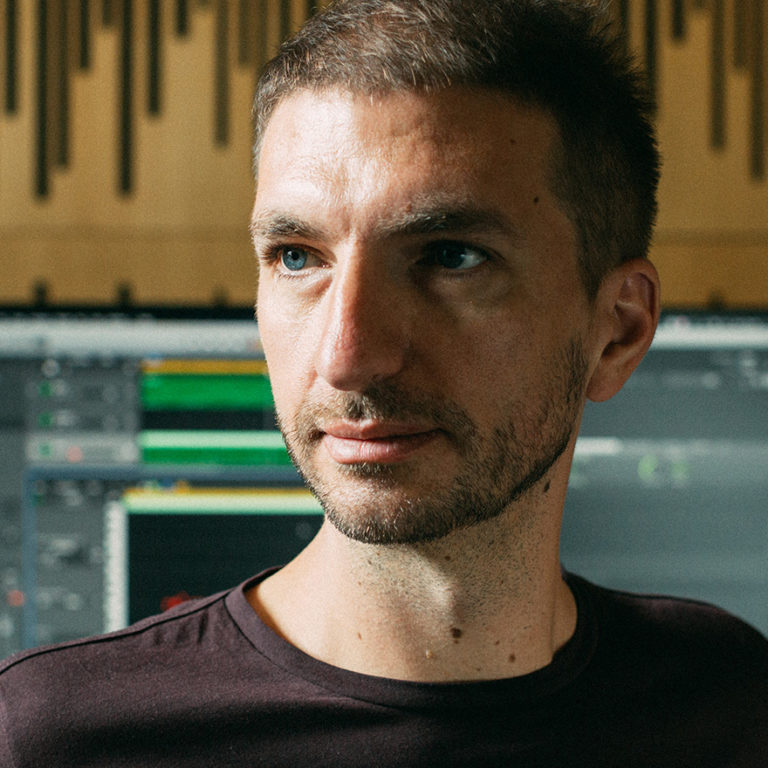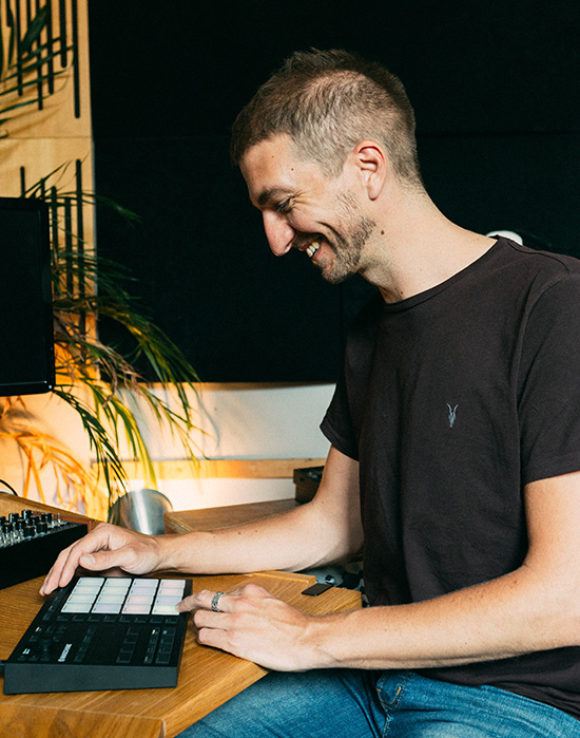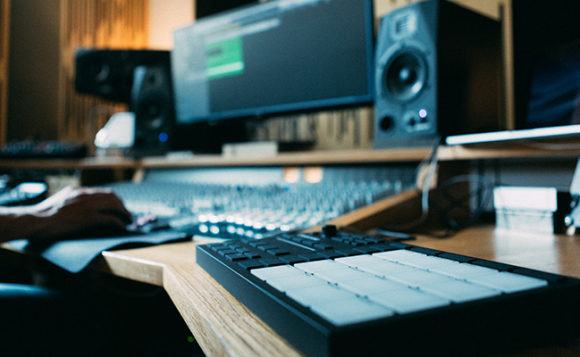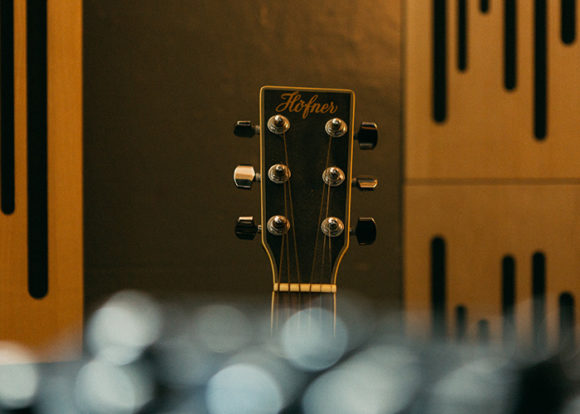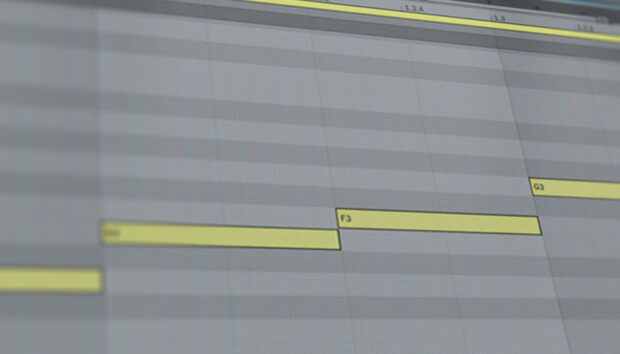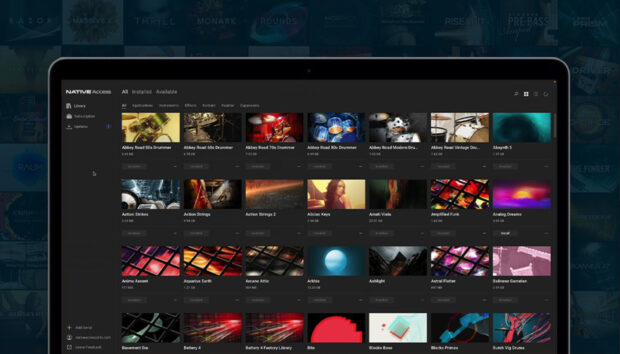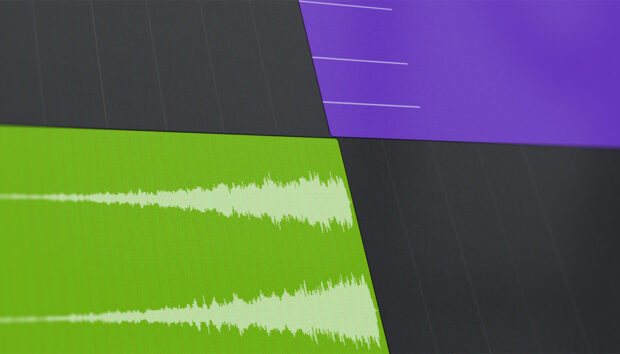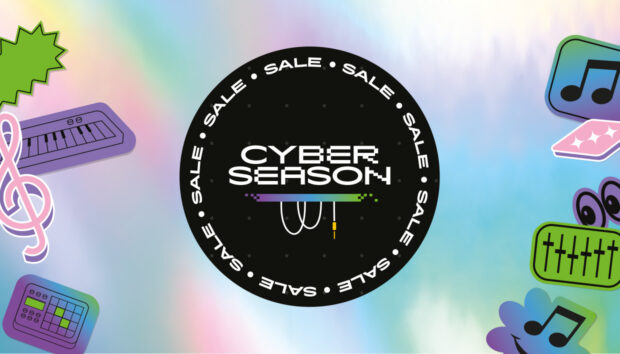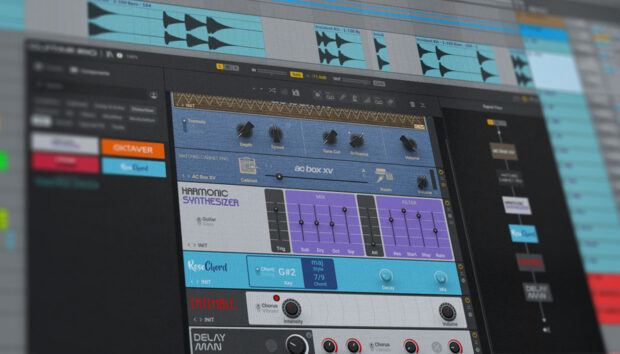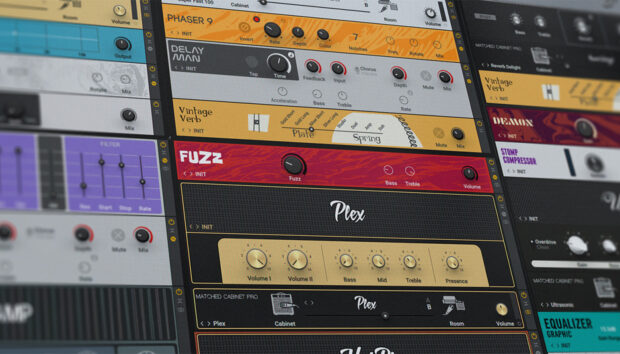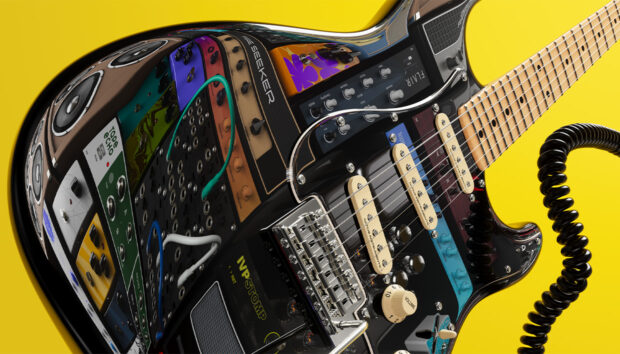With his second album, Beneath the Surface, recently released on Max Cooper’s Mesh imprint, atmospheric bass-music producer (a description he finds as effective as any) Alex Banks is riding the crest of an artistic wave that really began back in 2014. After releasing his stellar debut LP, Illuminate, Banks caught the ears of electronica royalty Modeselektor. So impressed were the seminal Berlin duo by Alex’s eclectic, organic yet highly danceable production style, they signed his album to their Monkeytown label and invited him to play the support for their Moderat show in front of a 3,500-strong audience in Poland. It was his first live gig on any meaningful scale.
“It was fucking amazing!” enthuses Alex. “I was incredibly nervous, but I can actually remember the feeling of walking on stage – like, shit, this is actually happening!”
That trial-by-fire performance changed everything for the Brighton-based muso. He spent the next couple of years taking his live show for Illuminate all over the world – a journey that ultimately led to the conception of the follow-up, Beneath The Surface.
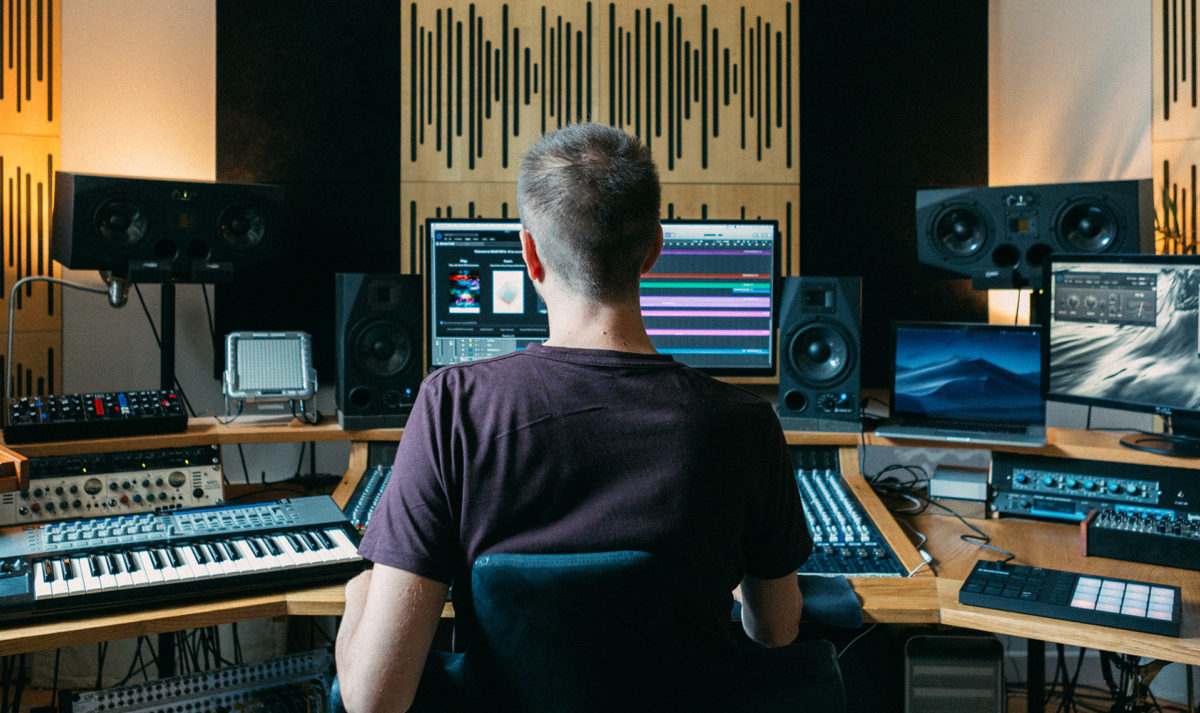
“A couple of years after Illuminate came out, I did quite a lot of touring, and that definitely informed the album – playing my tracks out live, remixing them on stage with my setup, and getting a feel for how those tracks work in a club, and in very different environments.
“There’s a track on the new album called ‘In The Silence’, the title of which is loosely trying to describe this moment I had on stage, where I was playing ‘Initiate’ from my previous album. I’d gone into this long breakdown section, where I’d filtered everything down and there were just a few little pads and rhythm parts playing; and even though I was in this huge space with all these people there, it was like somehow everyone was really connected to what I was doing, and it felt really quiet, like this real intensity. The lesson that I learned was about being able to create a bit more space in the music and allow for those moments, where you’re on stage and you can bring things down, take people with you and create dynamics.”
Presumably, then, you’d describe Beneath The Surface as a very different album to Illuminate?
On my previous album, I had so many ideas and was trying to fill every space. It was quite tangential, which was part of the charm of the music. But with this record, while it still maintains elements of that, I had the confidence to try and leave a bit more space here and there. So ‘In The Silence’, for example, breaks down into this section where it’s just a huge three-note bassline with a few textures where I was really imagining being back in that moment, in that sort of space and on that stage, and how that sort of compositional structure would work in that context. From that point of view, those experiences really fed into some of the production decisions that I made on the album.
Beneath The Surface combines an organically styled electronic sensibility with an obviously high level of musicality and songwriting. The latter, no doubt, comes from your instrumental training and experience, but it’s perhaps the pervasive textural feel that most sharply defines the project. Can you talk us through your approach to sound design?
A lot of layering! I use a lot of analogue drum sounds layered up with punchy samples, and that translates to a lot of other sounds. I’ve been really inspired by people like Burial and Four Tet, and Caribou, where you have this vinyl crustiness and dustiness thing going on – there’s something very warm and appealing about that. And referring back to my 90s roots, I love that old breaksy sound, some of the retro sounds, and the warmth and familiarity that I get from that. I like to sample a lot of random stuff from old vinyl, then put it through plug-ins and re-pitch, stretch, or just somehow warp to make these nice textures. You don’t necessarily listen to it and think, ‘Oh, that’s sampled’, but that graininess and warmth comes through in the music. Then that’s balanced with very carefully sculpted synth sounds and other textures that I’ve made from scratch in the studio.
The album is your first release on Mesh – in fact, it’s the first album release on Max Cooper’s label by anyone except himself. How did that come about?
I was working on collaborations with a few different people after Illuminate came out, and having met Max a few times at shows, I asked him if he’d be up for working on a tune, which he was. So we did a track called ‘Eve’, which came out as a free download. I’d always been a big fan of Max’s sound, he’d been an influence of mine; so it was great to collaborate with him. When I’d almost finished Beneath The Surface, he asked if I’d be up for sending the tracks over, and that was that. It’s been really cool to work with Max and his team.
You’ve been a MASCHINE user it launched. How are you using it in the studio?
I’ve got the Mikro, and I’m using the Maschine software inside Logic like a sound module. You can program beats inside Maschine, but because I know how to program beats in Logic, there doesn’t seem a huge amount of point in relearning new software. The way they’ve designed it, it’s really easy to use it as a sound module. I also use quite a few of the Expansions: Cavern Floor, Prismatic Bliss, Lone Forest, Motor Impact, Molten Veil, Dark Pressure.
Are you using the hardware in MIDI mode, then?
Yes. I might go through some of the presets on Maschine, find one that I like that’s inspiring, and just start tapping in some beats. Then, when I actually want to record it, I flick it into MIDI mode and record those patterns into Logic. I’ve got the best of both worlds, as I can work in Logic – an environment that I’m very comfortable with, and that’s obviously working with all my other plug-ins and hardware – but also use the Maschine pads, which I love the feel of. It’s so well built, very tactile, and that’s one of the reasons I like using it live as well. It feels like you’re actually playing an instrument.
I love the sounds in it as well. I’ll find a kit that’s a good starting point – a kick and a snare say – then go through and find some others to drop in there. Or I might use the hardware to play beats on the Vermona DRM1 – it can be really cool for that. I also use a lot of the Maschine drums to add more punch to sounds I’ve got from my drum machines. I’ve learnt the hard way that sometimes, rather than slaving away trying to EQ and compress a sound that’s not punchy enough, you just need to layer it with something else that’s going to do the job.
Why are you using MASCHINE MIKRO, rather than the ‘regular’ MASCHINE or MASCHINE STUDIO?
Because the main things I want from it are the feel of the pads and the sounds within it. Whilst the bigger Maschine can do a lot more from a hardware point of view, I don’t really feel like I need it in my workflow. I don’t actually mind clicking on the mouse and looking at a computer screen, because I’ve got two huge monitors in here. I’ve got so much other hardware in the studio, got the physical interaction side of it down, and if I want to program a drum sound, I’m usually going into quite a lot of detail tweaking it, which I’m going to find a lot easier to do on the screen. The Mikro is also more portable for taking on live shows.
We gather you’re also a REAKTOR user. Are you making your own instruments and effects with it?
I never really got into building in it – big respect to anyone that can do that but I don’t have the patience. I had a lot of fun putting my analogue hardware through Molekular and building my own presets within that – I found that really intuitive. With so many possibilities and all the modulation capabilities within Molekular, you can quickly get something that’s quite different, unusual and unexpected. Lots of textures on the record came out of that. And very much influenced by the way I use hardware, I would record its output into an audio channel, so rather than programming it via MIDI, I’d just fuck around with the controls and record the output of it back into Logic, then edit from that. That way, even though you’re programming with a plug-in, you’re still capturing some kind of musical performance.
Finally, what advice would you give the newcomer to music production?
A lot of people will tell you you’ve got to find your own sound, and that is hugely important, but to begin with, there’s nothing wrong with practising trying to make music that sounds like other people to learn techniques. I began by trying to copy other people’s sounds. I wasn’t too worried about trying to create my own sound, I was just blown away that there was a sound on my synth that was a lot like, say, the lead sound from Prodigy’s Their Law, and I just wanted to work out how to make something similar.
Copying music from different genres can be a great way to learn. I used to learn how to play the old jazz classics, and that taught me a lot about harmony and melody. Or you could be learning classical piano, and learn to play pieces written by other people, and that informs your subconscious library of melodic and harmonic textures. I used to go to a lot of drum and bass raves, and I love jungle basslines – I think you can hear that in my music, some of the energy and excitement from that. Being inspired by lots of different types of music has really helped to bring something different and unique to my production, and to create something that sounds distinctive. I’m actually crossing quite a lot of genres in my records, just making the music that comes out naturally and that I’m inspired and excited by at the time.
Also, don’t be so critical of your own music that it stops you making it. I know some people who make amazing records but are so critical of their own work that they never get anything released. At the same time, though, take stock of what you’re doing and make sure you’re not blatantly copying anyone. The world doesn’t need another Moderat or Bonobo, or whoever your favorite artist is – we’ve already got them. Take influence from them, for sure, but try and find a new angle on it and create a sound that’s your own.
photo credits: Edward Bishop








